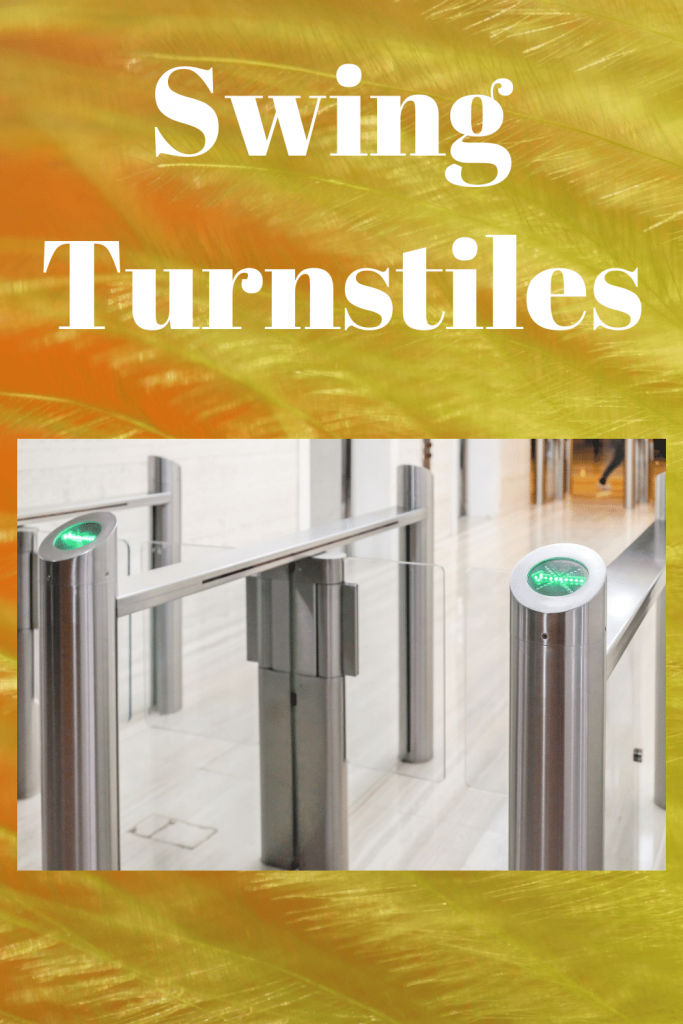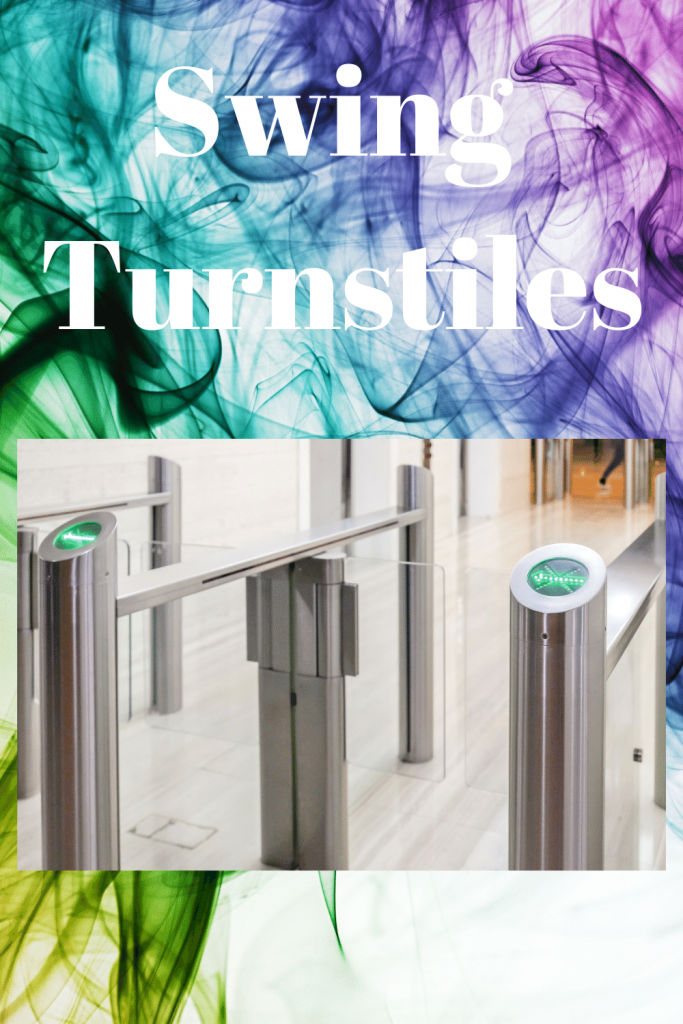Introduction
As an improved version of the intelligent tripod turnstile gate, the swing turnstile is one of the most often used pedestrian entree control turnstile gates. An intelligent access control system for personnel is the primary purpose of this high-tech gadget.

The swing turnstile’s blocking body (the swing arms) is a plane perpendicular to the ground, and blocking and releasing it are accomplished by rotating and swinging it back and forth. Stainless steel, toughened glass, and plexiglass are the most common materials used for the blocking body, but metal plates wrapped in unique flexible materials can also be used.
Swing Turnstile
Magnetic cards, bar code cards, ID cards, IC cards, and other RFID card readers can all be simply integrated into the swing turnstile. The intelligent control and management of access control may be achieved through the swing turnstile gate coordination by selecting the various identity and recognition system equipment and adopting reliable safety protection devices, alarm devices, instructions, etc.

When there is an emergency, the swing turnstile gate can be used to prohibit unlawful personnel from entering or exiting; in order to expedite evacuation, keep the passageway clear.
One of the most commonly used swing turnstiles is a single-core swing turnstile gate, while the other is a double core, which is utilized for both single-lane and multi-lane applications. Mairs swing turnstiles are extremely popular in many nations and can be seen in numerous places across the world because of their ultra-high cost performance and good quality services.
The turnstile swing arm, mechanism, infrared photoelectric sensor, alert (turnstile alarm), counter (card reading controller), etc. are all components of the swing turnstile gate. Dissuasion or release can be achieved by rotating the swing arm 90°. Swing turnstile gates have a swing arm that swings in either direction, hence they are commonly referred to as such.
In high-end establishments, the swing turnstile gate is usually equipped with auditory and visible alarms. As a result of an unauthorized intrusion, the alarm function is automatically activated, allowing the gate to be automatically locked, preventing it from crashing. It also helps to keep track of orders and protect the equipment from being harmed in any way.
Pros and Cons of Turnstiles
There are a variety of different applications for turnstiles. From parking lot entry to managing shift changes in a work environment, turnstiles are used to keep people out and allow them to enter. When choosing the right turnstile for your application, consider the type of traffic that needs to be controlled, the location, and the frequency of use. For example, you may want to have turnstiles that can count the number of people that pass through them.
The primary purpose of turnstiles is to prevent unauthorized entry. The security risks associated with unauthorized entry are real and can be disastrous. According to the Security 500, workplace violence and active shooter incidents are the two most common threats facing businesses. That’s why more Fortune 500 companies are installing turnstiles to secure their main entrances. Turnstiles can be installed in the front lobby, along the perimeter fence line, on upper floors, and even off elevator banks.
Turnstiles can accommodate various types of credential readers, allowing facilities to authorize entry by virtually any type of media. Furthermore, some turnstiles allow users to self-validate, reducing the workload of receptionists or security guards. Aside from these, turnstiles can be used to control large traffic, regulate flow, and check tickets. So, if you’re planning to install a turnstile at your location, consider the following tips.
How Do Optical Turnstiles Work?
If you have been asking yourself, “How do optical turnstiles work?” you have come to the right place. Depending on the system used, these devices can help manage crowds of people. The systems can help prevent people from getting through the gate by deactivating the cards of people who don’t need access to the building. Other features include a built-in destination dispatch screen, biometrics, and climb-over detection software. These turnstiles can also be tied into a building’s security system and mass-evacuation alarm.
Another feature of optical turnstiles is their ability to monitor the number of people who are entering and leaving a building. When more than one person breaks the beam, the system will immediately alert security staff. This is especially useful in high-traffic buildings and during emergencies. In addition, optical turnstiles can deactivate security measures for incoming and outgoing traffic, allowing up to 40 people to enter a building at any given time.
Optical turnstiles are typically comprised of two cabinets that are separated by a barrier. They detect people as they approach the turnstiles using infrared sensors. Some systems also operate without barriers, meaning that they only detect unauthorized entry. These systems are most effective in areas where security is of primary importance, such as public buildings. In such cases, it is important to ensure that the people using the turnstiles have proper identification and access cards.
Conclusion
The motor in the swing turnstile gate controls the mechanism’s operation and stops, and the mechanism’s operation and stops control the swing arms’ opening and closing (the blocking body). A motor powers the swiveling turnstile gate.

For the swing turnstile gate motor, the joint controller and the control board must work together. It is primarily responsible for ensuring that the swing arm of the gate does not become unstable. If persons and items are detected passing through the swing turnstile gate, the gate will automatically reset itself, or if there is no movement during a predetermined time period, the gate will return to its initial position. Read about how long a security camera last here.
